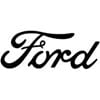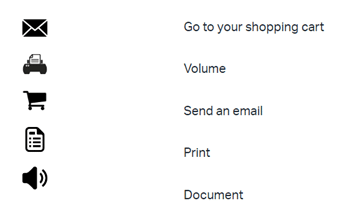Branding Process Guide
A Step-by-Step Guide to Creating a Brand
“The art of marketing is the art of brand building. If you are not a brand, you are a commodity. Then price is everything, and the low-cost producer is the only winner.”
– Philip Kotler, Professor At The Kellogg School Of Management
Our Secret Recipe
As Active Marketing gained momentum in the treatment industry, we found ourselves spending countless hours “reinventing the wheel.” That is why we created an eleven-step formulaic approach which delivers successful, lead-generating brands time and time again. This branding process guide will describe how we achieve high-quality results for every client we establish.

BRANDING STEP 1:
YOUR HISTORY
Getting Started
Active Marketing’s first step is to learn about your history.
The more we know about who you are and what you stand for, the better we will represent and encapsulate you in a branded package. We will sit down with you and your team to discuss different aspects of your company, such as:
- How and why the company was started
- Brief profiles on the founders
- Major turning points in its development
- Where the company is today
We start laying the foundation of your brand through this learning process. If the foundation isn’t sturdy, then the marketing campaign will fail, so it is vital to capture a realistic snapshot of who you are and what you do to draw a matching brand.
The Format
We conduct in-depth research on each client to create a light and readable brief. The brief will be a simple document which we will regularly refer towards to confirm that we are staying true to your brand’s identity. We use history as a marketing piece and ensure there are no mistakes, failures, or other non-flattering details present in the final piece.
A Note to Startups
As not every question will pertain to your business, we will zone in on your founders’ story and why they decided to start the business. With this background, we will fill in those blanks and turn your startup into a thriving business.

BRANDING STEP 2:
THE VISION
Finding Your Vision
The next step to accurate branding is a vision statement. Vision statements are brief sentences or paragraphs that show your employees, partners, and customers where you envision the company going in the future. Vision statements do not focus on what you do or who you are now; they define where you are going and who you want to be five, ten, or fifteen years from now.
Vision statements can be finite and quantifiable or subjective and emotional. You must determine what you feel best represents the company’s direction and what you want to be when you get there. We will look at your history and discuss with you where you see your company in the future. We will then create a well-worded, concise, and powerful vision statement.
Some Tips for Writing a Good Vision Statement:
- Declare what you will do, don’t shy away with words like “intend” or “desire”
- Be brief and succinct so that you say a lot in just a few poignant words
- Use the present tense
- Think long-term and big picture without being generic
- Keep it applicable for years to come – switching locations isn’t timeless
- Write from the heart so that it speaks to you
- Focus on success and your business goals
Your completed vision statement will give you, your employees, and your customers a clear vision of where you want to be in the future. The vision statement will also aid in the creation of the mission statement later in the process.
Examples of Great Vision Statements:
Why Write a Vision Statement?

Vision statements are for your employees and customers. They give purpose to your employees and inspire them to work their hardest to achieve a larger goal. Vision statements can also inspire consumers to work with your business. With a single unifying statement, employees and consumers will share that vision with you.

Vision statements are for you. They allow you to revisit and remember why you started this business. Through a vision statement you will reflect on your career journey, the events or ideas that have had the greatest impact on you, and the vision you had when your business was conceived.

Vision statements are for us. Crafting a vision statement will allow us to see your company through your eyes and see where you’d like it to end up. We will draw a line between where you are now and where you want to be through your vision, and we will find the next steps to get you there.

BRANDING STEP 3:
THE MISSION
We have discussed the first two steps in the branding process: learning about your history and writing a vision statement. The next step is to write an insightful, powerful statement about who your company is.
What Is a Mission Statement?
A mission statement is generally a one-sentence, clear, concise statement that says who you are, what you do, for whom, and where. If you already have a mission statement, we will boost it up to the next level.
Some questions we’ll ask which will capture your mission include:
- Purpose – Why do you exist?
- Business – What do you do to pursue the purpose?
- Values – What do you value, and how does that direct or motivate your purpose?
What Benefits Does a Mission Statement Offer?
Mission statements are one of the most used management tools. Companies spend thousands of dollars and countless hours developing the perfect statement that completely defines who they are because the benefits are huge.
Communicate the direction of the organization.
It’s much easier to trust a company when they honestly disclose who they are and what they are doing. When employees and customers can see that, it makes them feel more secure, which leads to higher productivity and increased close rate.
Stay focused on what matters.
The mission statement will remind you of your purpose and your business values and ground yourself for future decision-making processes. The mission statement serves as a reminder of what brought you into this business in the first place.
Improve morale.
Mission statements are a team effort. Often, companies consult each team member to discuss how they view the company, what matters to them, and where they see things moving to in the future. This makes employees feel important and heard. A mission statement will motivate employees and give them a goal to work towards and feel invested in.
How Do You Write a Good Mission Statement?
It can be difficult to narrow your company’s mission down to one or two clear, concise sentences. Some tips that will help you craft a great statement are:
- Keep it brief with 35 words or less
- Keep it simple and use straightforward language
- Be as specific and relevant as possible
- Be honest
- State what makes you different
- Answer the right questions
Some examples:
“The YMCA of San Francisco, based in Judeo-Christian heritage [Values], seeks to enhance the lives of all people [Purpose] through programs designed to develop spirit, mind, and body [Business].”
“At the Developmental Studies Center, we develop, evaluate, and disseminate programs [Business] that foster children’s ethical, social, and intellectual development [Purpose]. While nurturing children’s capacity to think skillfully and critically, we also strive to deepen children’s commitment to prosocial values such as kindness, helpfulness, personal responsibility, and respect for others – qualities we believe are essential to leading humane and productive lives in a democratic society [Values].”

BRANDING STEP 4:
YOUR VALUES
“While your vision is the why of your business, your core values define the how. They dictate how you hire, how your build relationships, how you interact with clients and customers, how you approach innovation, and how you stand out from the competition.”
JEFFREY PRAG – PRESIDENT, INITIAL DESIGN GROUP
The fourth step for branding is identifying your core values. These core values will attract prospective customers and clients to who you are and what you represent. Moreover, core values will quickly develop a meaningful relationship with your organization and create more brand loyalty throughout your business.
Tips on Writing Core Values
To identify your core brand values, start by choosing the true and authentic values of your business. Don’t look to industry standards or consider the best-practices of your competition. You must focus on what betters your business and what will effectively achieve your brand vision.
It is important to choose values that won’t change as the business changes. As your business grows from a startup into maturity, your values should remain relevant and timeless.
Document your core values in a list, with each value followed by a brief explanation of what it means. Keep the list meaningful but usable. This usually means having 5 to 10 values. If your list has too many values, it becomes difficult to comprehend and not easily consumable.
Understand Your Customers
The relationship you have with your customers will determine the success of your organization. Gaining a firm understanding of who they are and what they want will help you better serve them. Ask yourself the following questions:
- How do your customers perceive you?
- How do you want customers to perceive you?
- What are your customers’ needs?
Determine Where You Fit in the Big Picture
Finding your position in the market is crucial to your success. Your brand cannot fit everything, so pick what your business does best and explore that niche. Start by questioning:
- Who is your competition?
- What makes you stand out from the crowd?
- Do you offer a service that your competitors don’t?
The Process of Writing Core Values
The process of determining your own organization’s core values begins by making a list of:
- The adjectives that define the culture of your organization
- The unwritten rules of behavior and interaction in your office
- The words that customers use about your company in testimonials and positive feedback
- The way that your customers feel about your organization and what they believe your values are
- The strengths of your organization that are not recognized by your customers
- The skills and behaviors you value in fellow employees
Take this list and combine similar values into more generalized statements. By grouping them, the list becomes more comprehensive yet also easier to digest. As you bundle the list together, consider the core theme of the group. Use this core theme, the characteristic that made you choose to group them in the first place, as the core of the new value.
Next, prioritize this list, and shorten it to between 5 and 10 items. This isn’t a concrete rule, so your list can be longer if necessary. If you have a list of single words or short phrases, write a one or two-sentence description of the value so its meaning is clear.
You can see a great example of this in the core values of the Active Marketing brand:
- Integrity – We will be trustworthy and ethical in our office and in the business we conduct. We will do what we say and keep our promises. We will choose integrity over profit every time.
- Relationships – We recognize that success in life and success in business are both measured by the quality of our relationships. We make time to foster the growth of real relationships with our clients, partners, and team.
- Generosity – We value the people with whom we work, and the industry in which we work, and we will find opportunities to give back and help each other when we can.
- Innovation – We will stay relevant and competitive by discovering, creating, and employing new ideas, processes, and tools.
- Expertise – We believe that the key to great work is great expertise, and will nurture a culture that encourages continued learning and the sharpening of skills.
- Drive – We believe that in order to meet the needs of our clients and reach the goals of the business, all members of the team must be self-motivated and work with a sense of urgency in all their tasks.
Define Your Positioning Statement
A positioning statement is a concise statement describing your target market, how you want the market to perceive your brand and the differentiating factors that make your business stand out. Though it will be a one or two-sentence statement, each word must work the exact way you need it to catch the audience’s attention and draw them to act.
Your positioning statement will be the foundation for the rest of the messaging you build on. It must hold the exact tone you wish to portray. If you target more than one market, write a positioning statement for each market you’d like to pursue.
Guidelines for a good positioning statement
While you are creating your positioning statement, ask yourself:
- Is it clear, concise, and memorable?
- Does it address your exact target audience?
- Can your brand deliver on its promise?
- Does it define your unique selling point?
The formula for a good positioning statement
Positioning statements should all contain four main components:
- The target market
- Your brand promise
- The market or industry you are in
- The reason to believe the brand promise
The layout should look similar to this:
For [target market], the [brand] is the [unique selling point] among all [competitors] because [reason to believe].
Write Your Value Proposition
Positioning statements and value propositions are often confused with one another. Though they are both brand-focused, they are two very different tools. The positioning statement defines where your brand fits into the industry. The value proposition is a promise of value to be delivered to your target audience. Knowing what benefits most motivate your customers is vital to creating a top-notch value proposition.
Guidelines for writing a good value proposition
Value propositions are created for customers to better understand what your brand is and why they should buy your product. The language, tone, and voice should reflect that.
Some guidelines to follow while writing your value proposition are:
- Use the proper language for your audience
- Make it clear and easy to understand
- Provide concrete examples of the results your customers can expect
- Clearly state how your brand is better than the competitors
Define Your Messaging
Think of messaging as how you talk about your brand and why you exist as an organization. Brand messaging encapsulates key points to your target audience every time you reach out to them. Brand messaging, sometimes referred to as campaign messaging, can be created for every audience and product/service you offer as well as every medium you communicate through (tradeshow marketing pieces, social media channels, presentations, radio, etc.).
The most important part of creating your message is ensuring that it resonates with your audience and compels them to action. Regardless of how much the message is customized to fit a particular audience or medium, it should always tie directly back to your brand.
Guidelines for messaging
- Know your audience and make the message what they want to hear.
- Build around your audience with the platforms they use.
- Create continuity and avoid mixed messages.
- Stay true to your brand so your message encapsulates your goals, promises, and voice.
- Find your voice and use the same tone and language throughout.
Types of Messaging
There are many messaging techniques, but what you focus on will depend on who your audience is and what messages they respond to. Some of the most common messages include:
- Slogans – An informal sentence or motto that describes the brand’s mindset and can be frequently used throughout the rest of your marketing strategies.
- Taglines – A formal line of copy that can be placed directly under the logo to evoke emotion or compel action. Taglines and slogans are often the same things, but you can have both.
- Themes – A color, print, or pattern that exists across all marketing platforms to create instant recognition. Examples include Coca-Cola’s red and white or John Deere’s green and yellow. Forming a bond between a color scheme and your brand creates instant brand recognition.

BRANDING STEP 5:
YOUR PERSONALITY
The fifth step in Active Marketing’s branding process is defining your brand personality. The brand personality allows your audience to relate and react to your brand in a consistent, measurable way. Defining the brand personality is integral to the branding process, and other facets such as writing style and voice are guided by personality as well.
What is Brand Personality?
Brand personality is the personification of a brand by assigning human characteristics to it. The more relatable the personality, the more consumers will listen to it, trust it and, ultimately, use it. For example, suppose a teenage girl is looking to buy nail polish. In that case, she will likely gravitate toward a young, feminine personality instead of an adult, male one.
Your brand personality will also be used to make all of your future creative decisions regarding your marketing materials’ look and feel, which will include your logo, website, and advertisements.
Types of Brand Personalities
There are many brand personalities to choose from, but your brand personality must fit into your company’s history, vision, mission, and audience.
There are five main brand personality types and each one divided into a set of facets:
- Excitement
- Daring: trendy, exciting
- Spiritedness: cool, young
- Imagination: unique
- Contemporary: up-to-date, independent
- Sincerity
- Down-to-Earth: family-oriented, small town
- Honest: sincere, real
- Wholesomeness: original
- Cheerfulness: friendly, sentimental
- Genuine: kind, family-oriented, thoughtful
- Ruggedness
- Masculinity: outdoorsy, western
- Toughness: rugged
- Competence
- Reliability: hard-working, secure
- Intelligence: technical, corporate
- Success: leader, confident
- Sophistication
- Class: good-looking, glamorous
- Charm: feminine, smooth
Finding Your Brand Personality
Brand personality is a weighty step. It will be one of the more difficult and time-consuming aspects of building a brand. Once you establish your brand personality, the rest of the campaign will start falling into place. If you choose the wrong personality to focus on, your entire brand will be off, and you will see a less-than-satisfying result.
Active Marketing starts the branding personality process by identifying ten to fifteen personality traits for your brand from the list above. We will add some flair to each one through our creativity and intuition. We strive for unusual, eccentric traits, such as “compulsive” and we avoid the cliché. Clichés will make consumers see an outdated, unrelatable brand.
Once we form an adequate list, we narrow it down to three through seven traits that best describe your brand. We then write up a short, pointed personality statement that will be used throughout the rest of the campaign. The brand must have the same clearly defined personality traits across all media, channels, and messaging. This will create consistency and eliminate confusion.
Some examples:
There are some great examples of brand personalities that exemplify the difference between brand presentations. Brand personality can make a brand stand out, especially when companies are similar in functional attributes.
Marlboro is masculine, where Virginia Slims are feminine.
Apple is young and hip where Microsoft is older and reliable.
BMW is sophisticated and has a high performance, where Volvo is safe and family-focused.

BRANDING STEP 6:
YOUR VOICE
The sixth step in Active Marketing’s branding process is to define your tone-of-voice and writing style. A tone-of-voice is how you say a message through your words’ order, rhythm, and pace. In the context of marketing and branding, we focus on tone-of-voice in your written words rather than spoken. The messaging tone should intrinsically communicate the personality of the brand.
Finding Your Voice
Your tone of voice is an expression of you and your brand. It is a culmination of everything that has been discussed so far: your history, your vision, your mission, your values, and your personality. Your tone-of-voice sets you apart from the competition by creating an atmosphere that will resonate with your audience, build up trust, and influence purchasing decisions. Meeting these goals through tone of voice is key.
An example:
A simple sentence can be written in several different ways to provoke different thoughts and emotions. Depending on how you portray your message through tone, this sentence will look different.
How are you?
How do you do?
What’s up?
How’s it goin’?
If you are writing to teens in rehab, “What’s up?” would be suitable, but if you are talking to adults in a mental health facility, then “How are you?” would be more appropriate.
Formal vs. Informal
Part of defining your brand’s tone-of-voice is deciding whether that tone will be formal or informal. As illustrated above, an adult mental health institute would likely take on a formal tone, whereas a teen rehab center would likely be more informal. The difference in language will connect the brand with its target audience in a relatable way.
Formal Language
Can convey professionalism, trust, authority, and respect, but can risk being boring, stuffy, and lacking in personality. Formal language should follow these simple rules:
- Avoid colloquialisms
- Avoid contractions
- Prefer writing in the third person
- Avoid clichés
- Avoid second-person pronouns like “you and your”
- Use full words, avoid abbreviations
- Longer sentences with greater complexity are preferred
- Avoid humor
- Use stories only to reinforce a point or to create clarity in a message
Informal Language
Used to convey personality and emotion much more easily than formal. Informal language should (or may) use:
- Colloquial expressions
- Contractions
- First, second, or third person
- Can use clichés
- May address the reader with second-person pronouns like “you and your”
- Can use abbreviations and abbreviated words
- Should use short and simple sentences
- Empathy for the reader and the challenge of the topic can be shown
- Can use humor
- Can use storytelling to evoke emotion, create bonds, and strengthen relationships
Examples of popular brand voices:
Uber – considerate, simple, bold, consistent
MailChimp – clear, genuine, humor
LaCroix – laid-back, short, charming
Monetizing the Message
After the brand personality, tone, and writing style are defined, Active Marketing will make lists of content, phrases, and words to be used in marketing efforts. This will include a list of words that effectively represent the brand, a list of terms that should be avoided, and a grammar rule list with examples. This step allows us to remain consistent in the messaging across all marketing platforms.
Ample time is dedicated to this last portion of the writing style guide because it will be used for drafting and editing marketing copy in the future. The time invested in the writing style guide will heavily come into play when creating a significant amount of copy.
When completed, this brand guide will be edited to conform to the brand tone and be used as an example for future marketers. It will also inject the personality of the brand back into the guide so that it is continuously representing the brand.

BRANDING STEP 7:
THE TYPOGRAPHY
The seventh step in Active Marketing’s branding process is creating the typography palette. Typography is the font family, size, color, shape, and style that makes up every single word on the page – from headline to call to action.
What Are the Benefits of Great Typography?
When a visitor looks at your page, they look at it as a whole and subconsciously decide whether or not it is worth reading. This decision is made almost instantaneously and is affected by the layout, the images, the length of each section, and the font size used.
Finding the perfect font family for your message, voice, and personality has been scientifically proven to increase site traffic and conversions. The right typography in the right place should make skimming a page or finding information effortless and bring focus to what is being said.
For a formal, informative message, Baskerville is more appropriate. A laid-back, casual message will call for a font such as Comic Sans. The wrong font will confuse the reader and scare them off. If your copy is hard to read, too big, too small, too light, too dark, etc., your visitor will leave your site, and your conversation rate will decrease.
Key Elements of Typography
Several elements make up typography. A few of the main components include:
- Font Face – The style of font used
- Font Weight – How heavy or bold the font is
- Size – How big or small the copy is
- Color – What color the copy is
- Capitalization – Where and when to use capitals
- Italicization – Where and when to use italics
- Creating the typography palette
We will find two to three fonts when creating the typography palette. One font will be used as the primary, and others will be used for accents, headings, graphics, and your logo. A consistent font will accentuate your brand personality and make it apparent to prospective clients and current customers.
Examples of branding fonts:
Serif – Sony, Volvo, Canon









Every point discussed so far is essential in writing a set of strict guidelines to follow in creating marketing materials across any platform. These guidelines will be comprehensive and clarify when styles should be used by Active Marketing and by future marketing companies.

BRANDING STEP 8:
THE COLORS
The eighth step in Active Marketing’s branding process is creating the color palette. A website’s color is the first thing the reader notices, and color will be determining factor as to whether they remain on your site or bounce to a more attractive site. Each color provokes a specific emotion or thought process, so the site color must show your brand and the feelings it provokes.
Using Color in Marketing
Whether it is on a web page, a print ad, a television commercial, or anything in between, coloring creates your brand’s image and communicates which emotions you want your audience to feel. Brand color examples include:




Color provokes emotion, and because the same color palettes are used across all marketing materials for these companies, the consumer connects to the emotion and relates it to the feeling, emotion, or thought when using that specific product. The consumer should see the brand colors and not only relate them to the brand but have a desire to purchase the brand product.
The Color of Emotion
Every color prompts a different emotion and can drive people towards certain actions. Using the right coloring can increase your company’s conversion rates. Active Marketing will use all of the data collected throughout the branding process to form a group of colors that reinforce the personality of the brand.
Some emotion-provoking colors are:
- Red – Energy, danger, strength, power, action, passion, desire, love
- Orange – Enthusiasm, fascination, happiness, creativity, determination, attraction, success
- Yellow – Joy, happiness, intellect, energy, hunger
- Green – Growth, harmony, freshness, fertility
- Blue – Depth, stability, trust, loyalty, wisdom, confidence, intelligence, truth
- Purple – Power, nobility, luxury, ambition
- White – Safety, purity, cleanliness, faith, goodness, innocence
- Black – Power, elegance, formality, death, evil, mastery
The Color of Competition
Your color palette must stand out from the competitors to be noticed by the consumer and create a strong association. To avoid matching with a competitor’s brand colors, we will create a list of all competitors and their color schemes. We sort that list by the frequency of the color in each palette and use that information to avoid such colors when developing your brand.
Creating the Palette
After we determine what colors to avoid, we pick out several colors that reinforce your brand personality. This will create a brand that is different in appearance from substitute offerings by your competition.
For each color, we will provide specific use-cases with examples so that it is clear where the color is used. We keep the number of colors to a minimum because fewer color variations make a greater impact on the consumer. Adding color to your campaign is an essential step that should be taken seriously to create a successful, lead-generating brand.

BRANDING STEP 9:
THE PHOTOGRAPHY
The ninth step in Active Marketing’s branding process is defining the photography style that will be used across marketing platforms. This includes a set of guidelines that state what images can be used where, what formatting they must take, the emotions that they should provoke, and any ethical guidelines that need to be followed while choosing future images.
Photography in Marketing
A well-placed photo will increase leads and conversation rates. Photography provokes an instant emotional response and creates a trust that written words are unable to do. When a customer visits your website, the first thing they do is scan it to see if it’s relevant, helpful, and reliable. Photos give them an immediate, concrete example of your brand and keep the audience on your page.
There are several reasons why photography is used across almost all marketing campaigns:
- To evoke an emotion – People are visual beings. Seeing an image of a smiling child, an elderly couple, or someone struggling with depression will make them empathize with the subject and act on their emotions.
- To show what you do – A photo is an excellent opportunity to feature your facilities, treatments, or staff. It shows the audience what you do and who you are, rather than just telling them.
- To build trust – A consumer is more likely to buy if they can visualize what to expect from a purchase or service. This is especially important for purchases made online, where the audience is unable to physically see the product.
The Photographic Style
The photographic style used in your brand should convey the distinct values and personality of the brand. Photography should strengthen, reinforce, and build on brand personality. We will start determining the proper brand imagery by listing out which emotions the brand reflects, and we will form guidelines to be used for the overall style.
The Environment and Setup
We take into consideration photography details, such as if photos are posed or candid. Will the subject of your photos be people or places and things? In what environment should people be photographed? If the subject is a person, will the person be engaged with the business, like attending a class or meeting, or will they be in a more neutral setting like walking down a sidewalk? We will address these questions to document which images are acceptable for this brand and why.
Photography Guidelines
We document every image we use along with a list of technical guidelines (such as minimum and maximum resolution, image size, acceptable formatting, color, etc.). We also provide example photographs that meet the guidelines and enhance the personality of the brand. This will allow us to pull from images used in the past and help future marketers stay true to your brand without extra work.
There may be cases where imagery of vulnerable people or situations harm the subjects if their information is released. We make sure to document each of these instances in the guidelines to protect the photographer, the subject of the photo, and your organization from potential ethical issues.
We also create a list of rules that clearly state what types of images should be prohibited and what imagery (like the faces of children) should be hidden from the frame. Additionally, some images may be insensitive to your market, like imagery of active drug use to the addiction treatment market. We document each image so no such errors occur.

BRANDING STEP 10:
THE ICONS
Create Guidelines for Iconography and Illustrations
The tenth step in Active Marketing’s branding process is defining the iconography and illustration guidelines that will be used throughout all of your marketing efforts. Iconography refers to all of the images and symbols that will appear on your website and across your marketing paraphernalia. When used correctly, icons are highly effective in conveying big ideas without words.
Iconography in Marketing
Icons can be extremely useful in marketing, especially in an image-based world such as this. Adding icons and illustrations draws in the client’s attention while still conveying the same message that the copy would.
Icons can also break up long blocks of text, show a point of interest, and separate sections. We will pick out the important pieces of information that require an icon and develop a symbol that perfectly represents that message.
Icons are also meant to be scannable and attractive. Having too many icons on a page will decrease the impact of each one and cause the reader to bounce.
An Exercise
Take a look at the following icons and match them up with the word or phrase they represent:

Because people are generally visual and associate everything with a physical object, having an image allows them to connect with it and remember it quickly.
Medium explains it well:
“Icons should be suggestive of the functionality with which they are associated. The best icon will suggest to the user the primary purpose of the program of operation without having to read the accompanying text. Users recognize functionality suggestive icons more rapidly than other forms because they directly associate with a physical object or action.”
Usage Guidelines
The most efficient way to create guidelines for iconography and illustrations is to first create the designs in a way that enhances the brand personality, and then begin writing the guidelines. The guidelines will be based on the characteristics of the icons and what makes them cohesive in style and brand strengthening. Our icons will fit perfectly into our existing designs.
While we create icons for your current site, we will also create a complete set for future use. This will save us time in the design process and provide a much more consistent brand. The result will be a library of icons to choose from in the future.

BRANDING STEP 11:
THE LOGO
“It is only by association with a product, a service, a business, or a corporation that a logo takes any real meaning.”
– Paul Rand
The eleventh and final step of Active Marketing’s brand process is designing the logo. The logo design process is the most time-consuming and difficult part of branding. Logos must communicate the personality and mission of the brand in a single icon. Most logos will be both a symbol and a text mark, but they do not have to be. For instance, the Active Marketing logo is a text logo with an abbreviated version for smaller sizes.
Part of what makes the logo so difficult is the amount of importance placed on it. The logo is a foundation of the brand and it will be displayed in more places, more frequently, than any other piece of material.
Importance of the Logo
Logos are a critical aspect of business marketing. They anchor the brand to an image and become the most visible manifestation of the company across all of your marketing media. They are designed to be the physical representation of who you are and what you do, and they will create brand awareness and recognition. Logos refer to your business in shorthand and show professionalism.
A common mistake people make when designing logos is inconsistency through lack of attention to proper sizing, fonts, or colors. Active Marketing pays diligent attention to every single detail throughout the logo design process.
Designing the Logo
Your logo is a culmination of the previous ten branding steps. It will be a symbolic representation of you and all that your brand stands for.
The most effective logos are:
- Simple – Simple logos are easier to recognize and remember.
- Memorable – The logo should be relevant to the brand and unique enough that it is recognized when seen.
- Timeless – Future-proof your logo so that as the business changes, your logo will stay effective.
- Personified – The logo should reflect the personality of the brand, but not necessarily the mission or name. Your logo does not need to be self-explanatory.
- Versatile – Make sure that your logo can be displayed in a single color (think black on white) so that it can be printed on any media. A simple logo, without a lot of small details, allows for it to be printed on media that has limited resolution.
For each logo we design, we include several variations for rectangular and square proportions or horizontal and stacked versions. This allows the logo to be effectively displayed on more media and saves time. Each of these logos will come with a specific set of guidelines to follow whenever they are used.
Logo Guidelines
To create consistency throughout the brand, it is important to write a set of guidelines explaining where and how each logo can and cannot be used. We will create a rule that the orientation, size, or outline of a logo cannot be changed. We also describe the clear space, color, size, and font of each variation and provide clear examples for future reference.
The logo is a defining aspect of the brand, and it must be used properly at all times.

BRANDING STEP 12:
COOK A CAMPAIGN
Now that you’ve got a professional brand for your business, it’s time to cook up some campaigns to Start Growing. Contact us if you’d like some help with any part of the branding process, or if you’d like some tips to creating campaigns that fit with your brand and your business goals.
Active Marketing:
Proven Game Changers
Active Marketing transforms businesses with our strategic horsepower. We have proven experience developing and executing marketing strategies that get your brand’s best messaging in front of the right people at the right time and place. Our impact on our clients’ bottom lines changes the way they do business.
We’d love to talk to you more about your potential.
Give us a call today: 1 (231) 946-2334
More Addiction Treatment Insights
Growth Secrets for Addiction Clinics
Leveraging Digital MarketingCrafting a robust online presence begins with a well-structured SEO strategy, focusing on the...
A Step-by-Step Guide to Infographic Submission and Promotion
A Step-by-Step Guide to Infographic Submission and Promotion Capturing your audience’s attention is the most important part...
Five Tips for Designing a Great Logo
Five Tips for Designing a Great Logo Designing a great logo is crucial for establishing brand identity and making the right...


